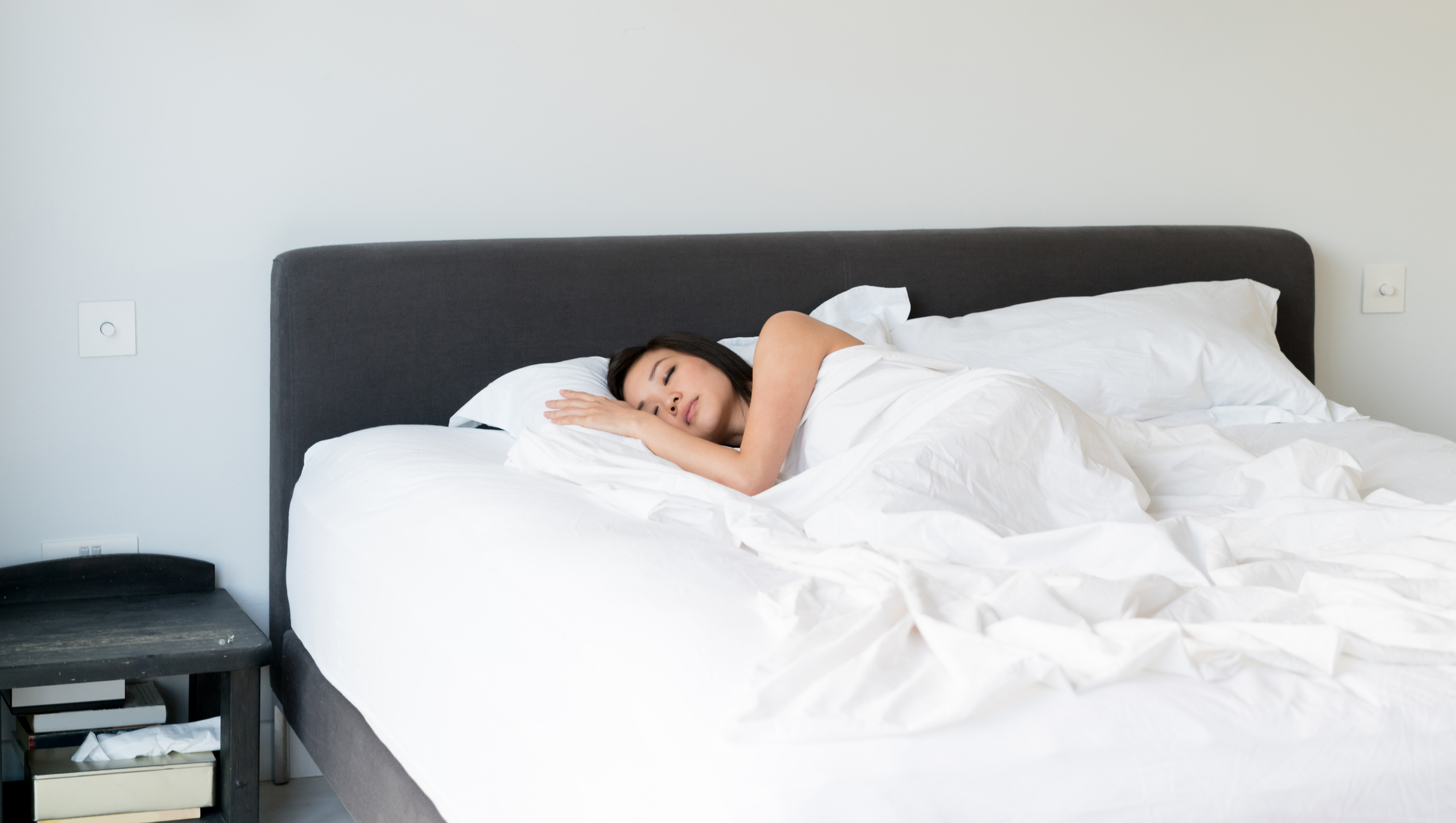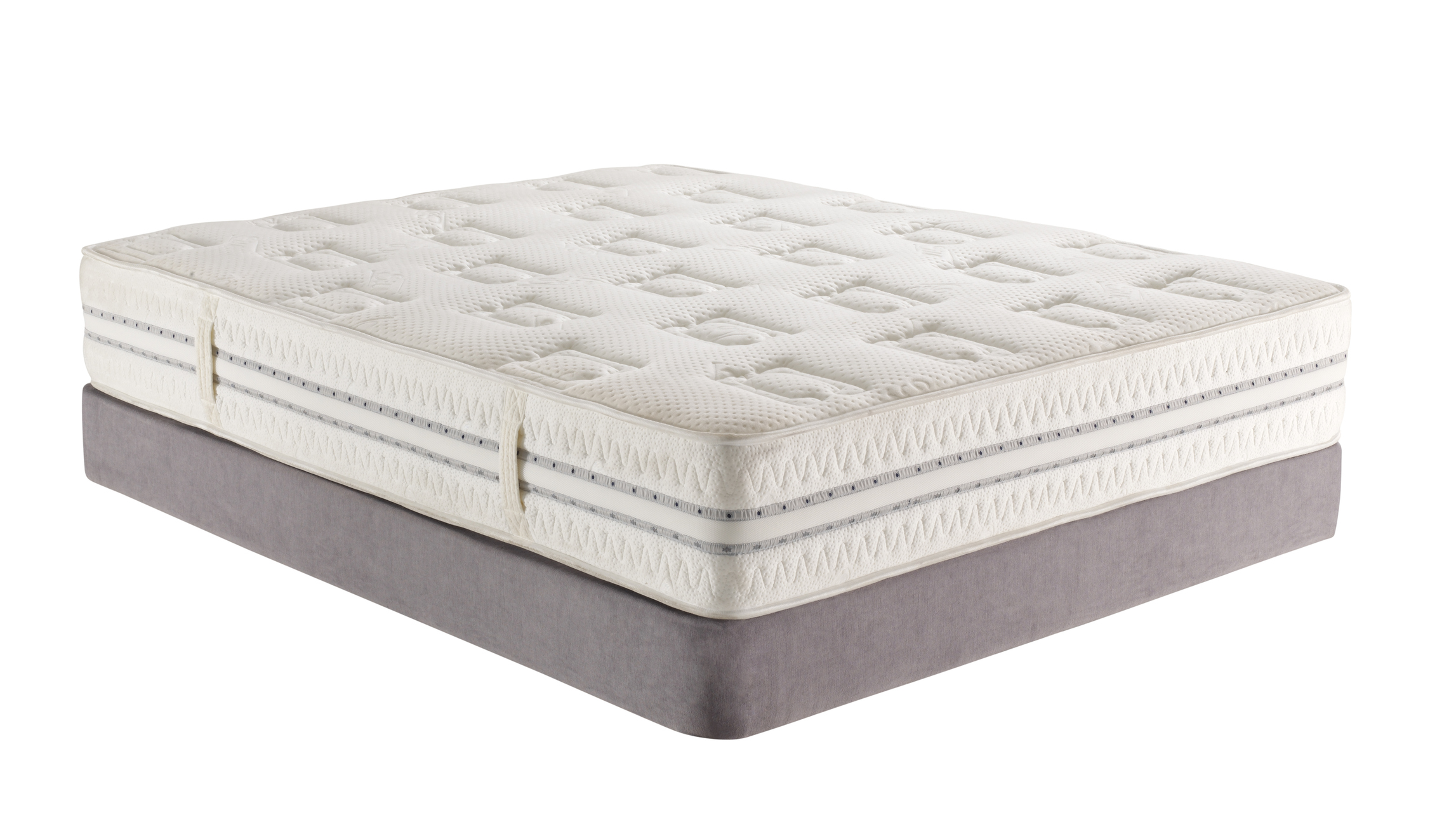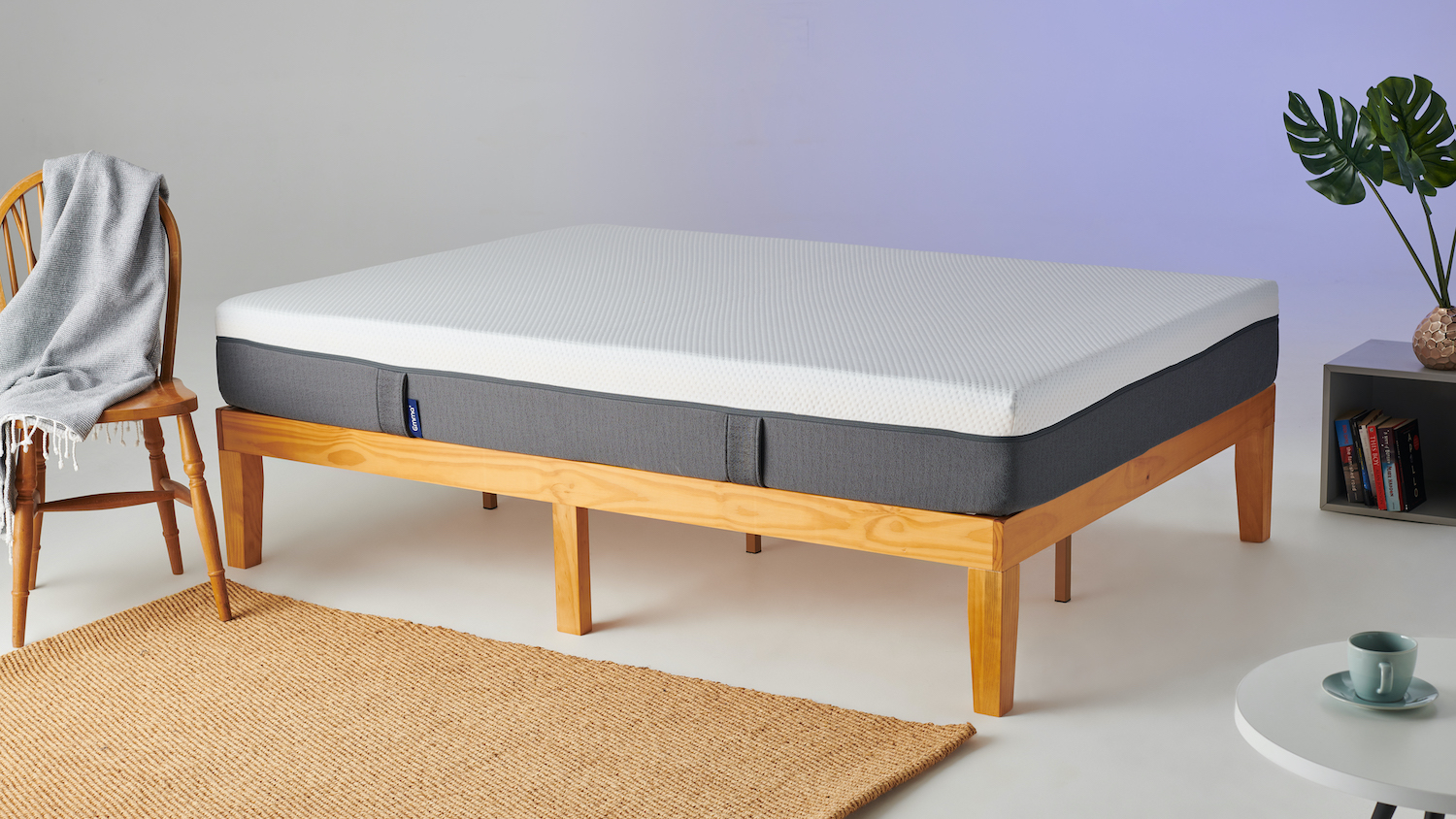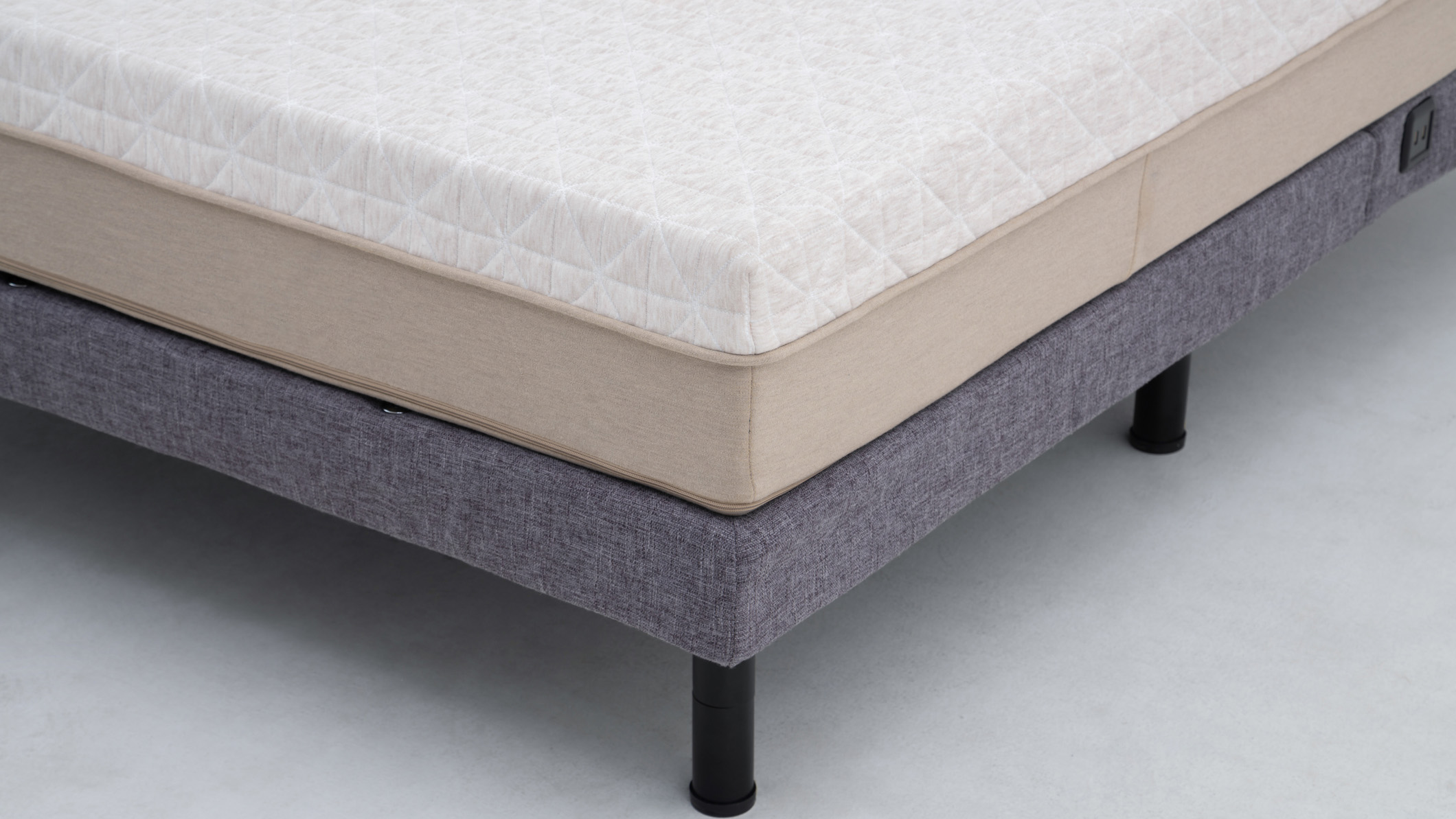
If you’ve been looking into buying a new bed frame, you’ll probably have come across box springs in your travels. But do you need a box spring for your mattress? Most of 2024's best mattresses can be used with a wide selection of bed frames, but this won’t always include box springs. Why? Because some mattresses are too heavy for a box spring or may be made of materials that can be damaged by a box spring.
Box springs are often seen as a more traditional option than other bed frames and they do have both their pros and cons. In this guide, we’ll run you through everything you need to know about box springs and help you decide whether they’re the right choice for your mattress. With this year's Memorial Day mattress sales on the horizon, you could pick up an early bargain.
What is a box spring?
A box spring is a base made with a sturdy wooden or metal frame, filled with a set of wire coils. They are wrapped in fabric, which allows them to look similar to the mattress, creating a more blended look to a bed. Box springs come in a variety of styles, allowing you to pick one that matches both your mattress and bedroom look.
Most box springs are nine inches in height, although you will find some slightly lower at around seven or eight inches. This is the standard height of a box spring, but you can find much taller options, with some box springs going up to 16 inches in height.

What do box springs do?
Box springs have a variety of functions. Primarily, they provide extra support to a mattress, helping to absorb the impact of sleepers. Box springs also reduce wear and tear on a mattress, compared to using a wooden or metal frame. They also elevate a mattress off the ground and add extra height.
Hotter sleepers should also enjoy a box spring, as they help to keep mattresses cooler. This is because the design of coils and fabric helps to promote airflow and prevents heat from becoming trapped. They can't compete with the best cooling mattresses, but they’ll certainly boost airflow for the average mattress.
Do you need a box spring for your mattress?
There are pros and cons to box springs, so it’s important to decide whether one is right for both your mattress and your sleeping preferences. Let’s look at the reasons why you might or might not need a box spring:
Reasons why you need a box spring
1. You have a traditional innerspring mattress: Traditional innerspring mattresses are the perfect partner for a box spring. Being slightly thinner and lighter, they’ll benefit from the extra support the box spring gives, with the box spring also helping to extend the lifespan of the mattress. Some of our best hybrid mattress selections are innerspring hybrids, which could benefit from a box spring.
2. The mattress manufacturer recommends a box spring: Most mattress manufacturers will recommend the best type of base for its mattresses. So if your chosen brand suggests using a box spring with its mattress, we’d recommend following this advice for the best night’s sleep.
3. You like a taller bed: As we’ve already mentioned, most box springs are nine inches high which, combined with your mattress, will give you a taller structure to sit and lie on. This can be particularly useful if you’re taller and want to be able to sit comfortably on the edge of a bed. And, with options going up to 16 inches, you can make a box spring considerably taller if you want.
Reasons why you don’t need a box spring
1. You own a memory foam or latex mattress: All-foam and latex mattresses are often heavy. And this means that a box spring can’t support them. You could end up damaging both the mattress and the base. Most of our best memory foam mattresses work best on different bases, such as foundation and platform beds.

2. You prefer the look and function of a platform bed: Platform beds are a more modern alternative to box springs, combining a low-profile bed frame with a sturdy base. You’ll find either solid or slatted options available and some are even upholstered in a similar fashion to a box spring.
3. You want to place your mattress on the floor: If you have a soft or sagging mattress, or want to sleep cooler, there are some reported benefits to sleeping on the floor. A hardwood or tiled floor will firm up a mattress and help keep it cooler as well. However, mattresses can develop mould and mildew and you could risk voiding the warranty.
Are box springs necessary with a mattress?
The question here is less whether a box spring is necessary, and more about whether it’s compatible. As we mentioned at the start of this article, not all mattresses can be used with a box spring. Older, thinner style innerspring mattresses benefit hugely from box springs for extra support. But if you have a hybrid, latex or all-foam mattress, a box spring may not be suitable as the mattress could be too heavy.
If a box spring is recommended by your mattress manufacturer, then it’s fine to go ahead and purchase one. Otherwise, make sure to check the mattress brand’s website first before buying a box spring. A box spring, like any bed base, isn’t a necessary purchase but, with the right mattress, it can be the wisest one.
Can you use a box spring with beds in a box?
If you’re thinking of investing in one of the best mattresses in a box, you’ll want to make sure you’ve picked the right base to go with it. In many cases, this won’t be a box spring. Most mattresses in a box are made from modern materials, with plenty of in-built support that won’t benefit from a box spring.
Plus it’s likely that many of these mattresses will be too heavy, as they contain materials such as latex and memory foam. Of course, there are exceptions to these rules, but it’s essential to check with the mattress brand first as to whether a box spring is suitable.
Foundation vs box spring: Key differences
Foundations are similar to box springs but are made with wooden slats instead of metal coils. These slats make the base more durable than a box spring and they will offer firmer support that means they can even be used with some of the heavier memory foam mattresses.
Foundations are suitable for a wide variety of mattresses and can be used either with a bed frame or by itself. Like a box spring they’ll add height and support, as well as helping with airflow.
It is important to choose a foundation with closely spaced slats (around three inches apart is perfect) to ensure that you get adequate support from the foundation, but still allow for ventilation. If you want to find out more, read our guide to foundations vs box springs.

Platform vs box spring: Key differences
Platform beds are an affordable option that provide a sturdy and supportive base for your mattress. A platform is a foundation combined with a frame to give a modern and stylish look that’s increasingly popular.
You’ll find platform beds with either a solid or slatted surface, with some being upholstered to create a similar look to a box spring. Slatted platform beds will provide better airflow and are the best choice for those who sleep hot. However, platform beds are fairly firm so if you’re sleeping on a thinner innerspring mattress, you may prefer a box spring for added comfort and bounce.
Should you buy a box spring for your mattress?
Box springs aren’t as popular as they used to be, with many modern mattresses being too heavy to use with them. And, because they contain coils, they will also wear down faster than a solid wood base or frame. However, if you still prefer to sleep on an innerspring mattress, a box spring could be a great investment as it will provide extra support and comfort for these thinner mattresses.
A box spring is also a great choice for those who want to make their bed taller, which can be particularly useful for taller people. Box springs can also help to extend the lifespan of an innerspring mattress, as the coils will react to movement, helping to spread weight evenly across the mattress. Box springs are still rightly popular with many sleepers, but it is important to check that your mattress is compatible before buying one.







